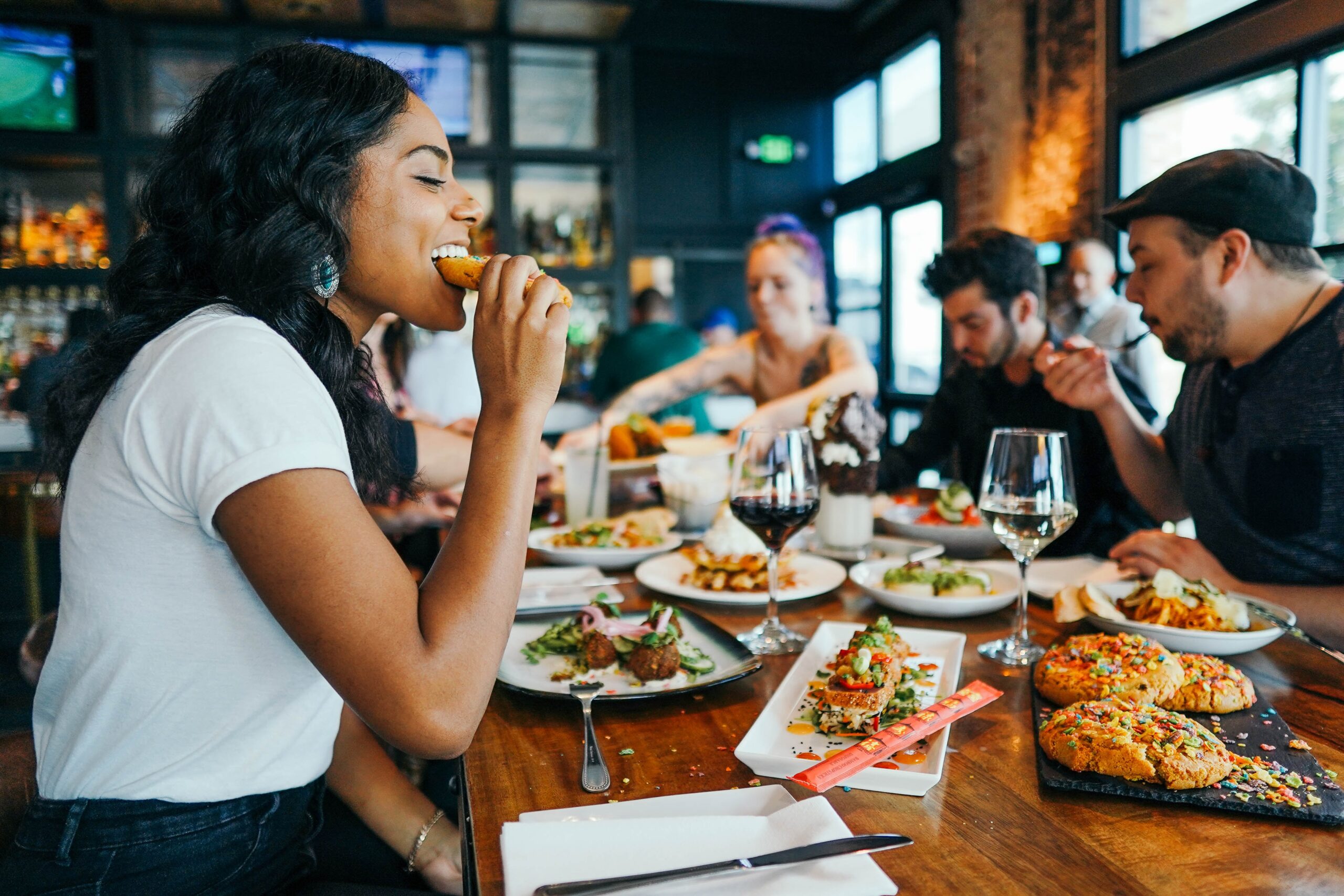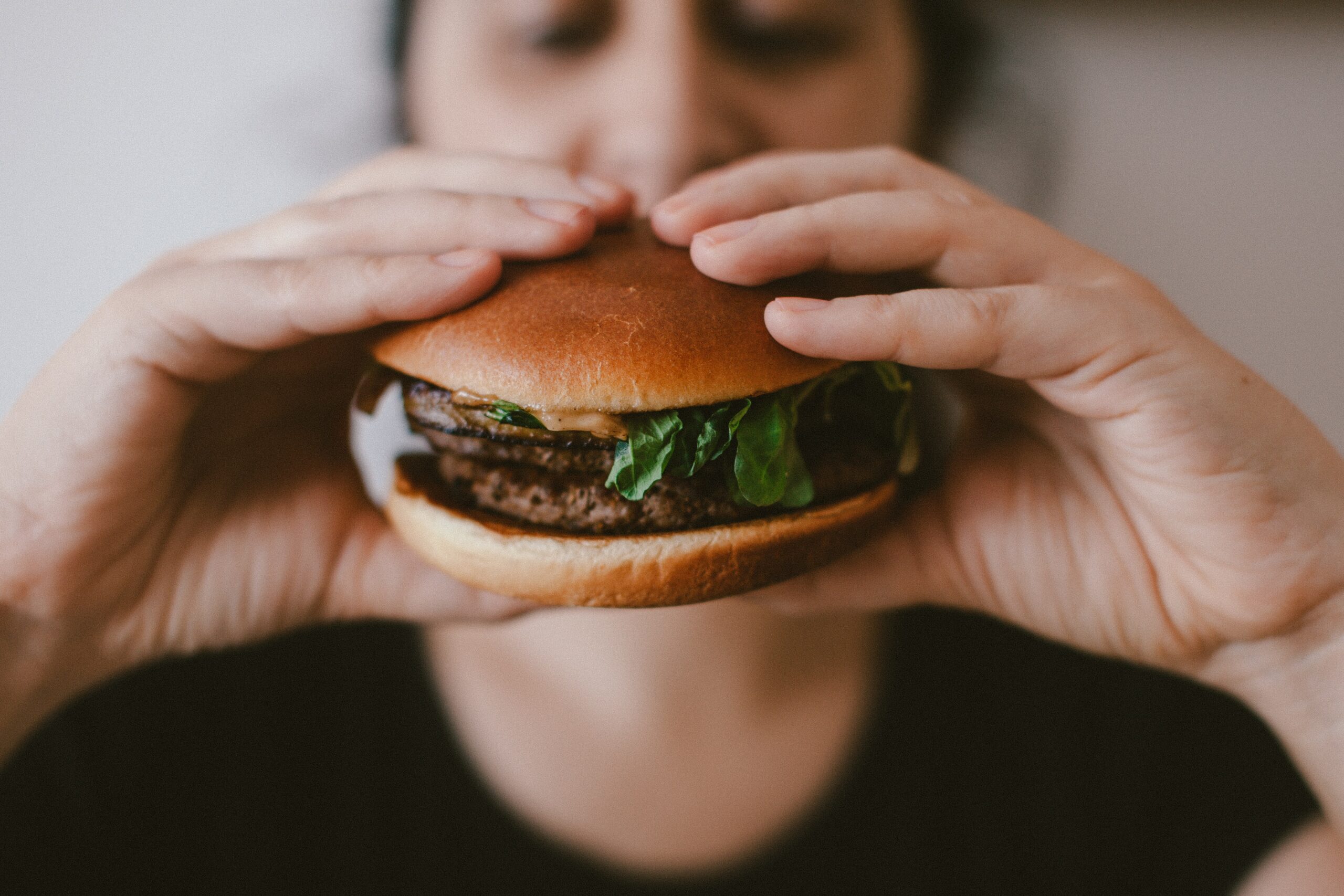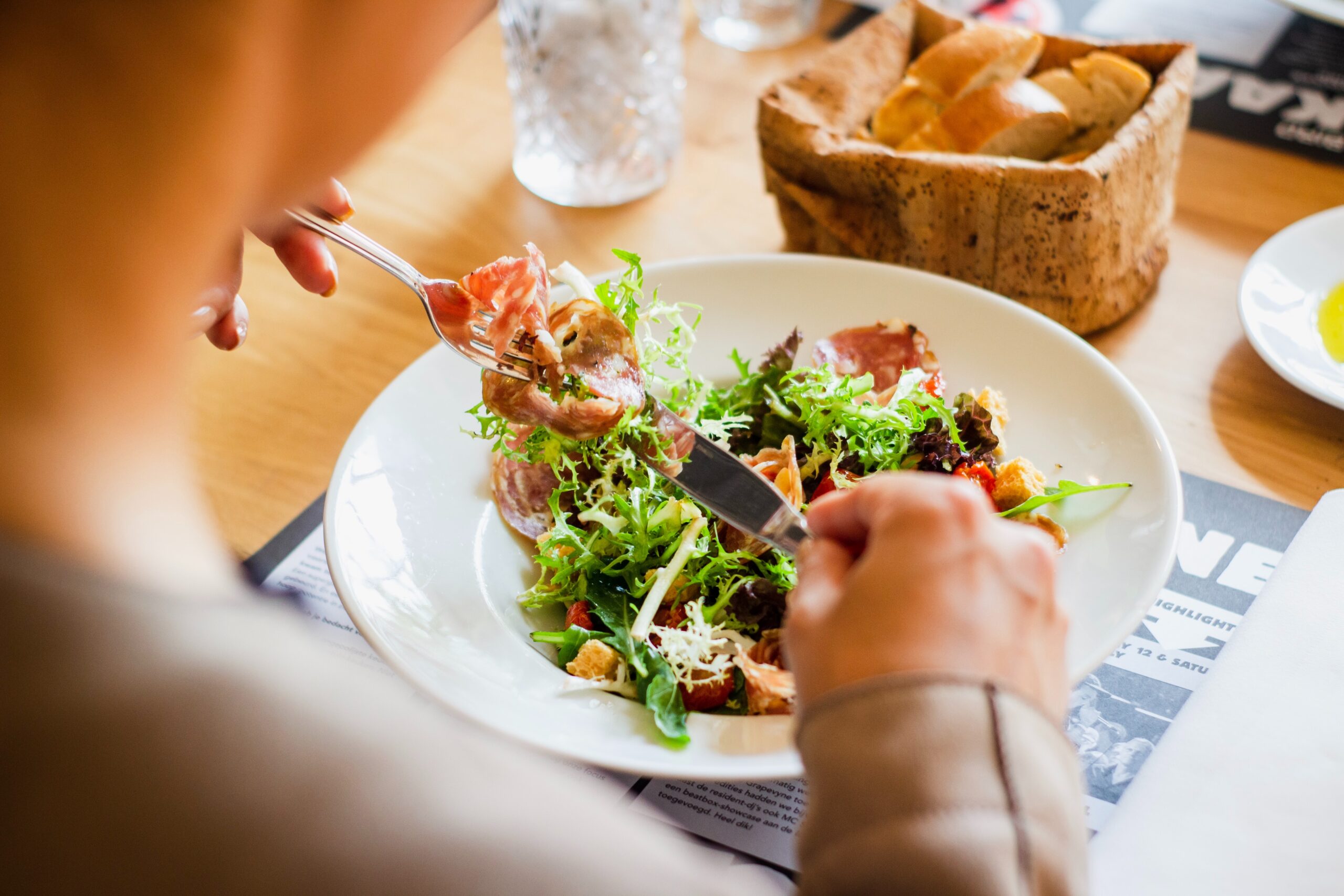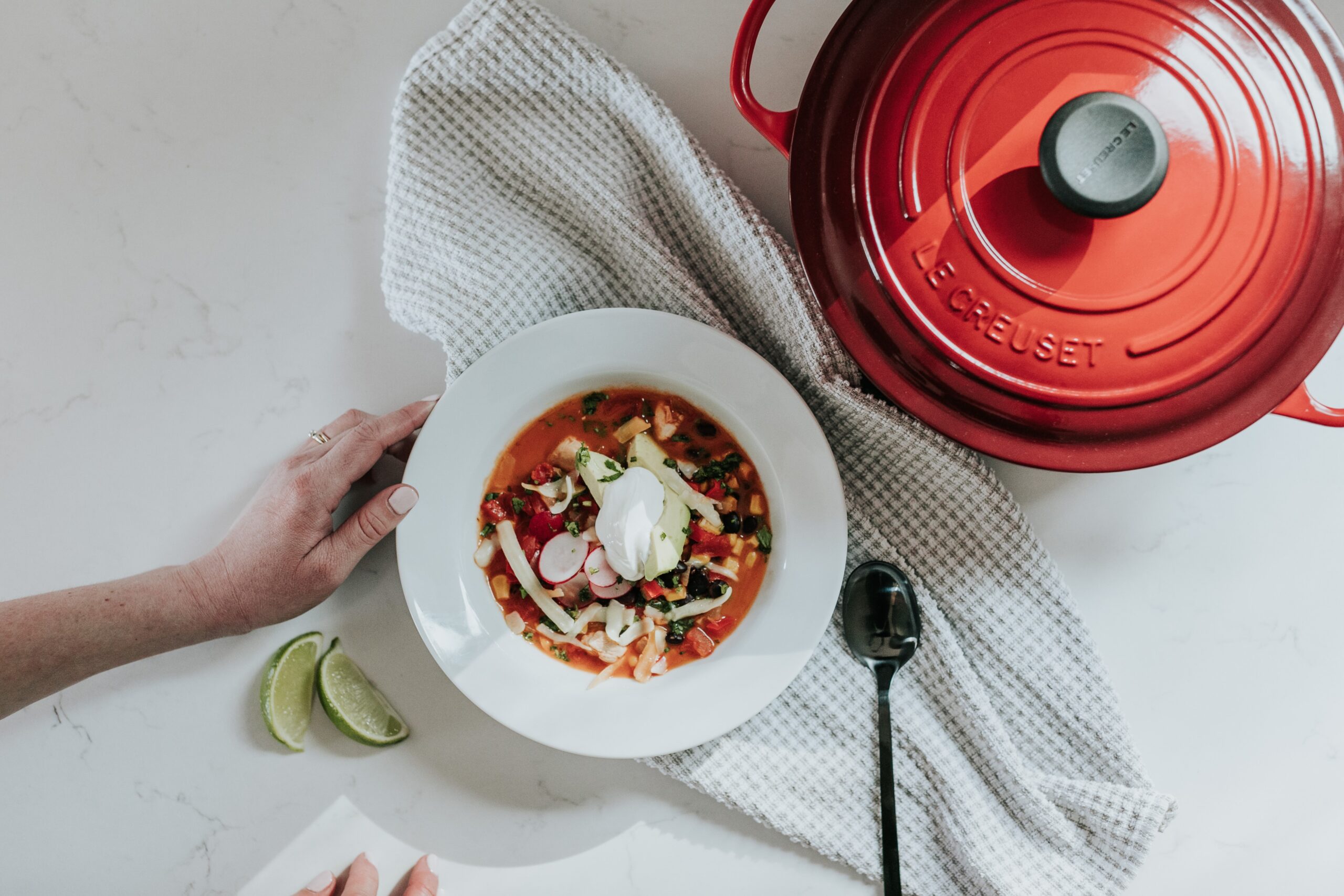Finding the best diet to help you manage symptoms while you’re dealing with an H pylori infection can be difficult.
Gut symptoms caused by H pylori are often aggravated by eating certain foods. But it can be difficult when you’re just starting out with a new diagnosis to know which foods to avoid.
In this blog post you’ll learn:
- The foods you should avoid to help minimize your gut symptoms
- Foods that are clinically proven to help treat an H pylori infection
- Whether or not it’s worth following those many “reflux” diets out there
- A 7-day starter meal plan that’s made to minimize upper GI symptoms
This post will help you feel confident in navigating the best H Pylori diet for you so that you can minimize your symptoms and spend more time eradicating that gut infection.
If you’re ready to start taking control of your symptoms using food, let’s go!

Common H Pylori Symptoms
Before we jump into learning all about the best diet to help manage H pylori symptoms, let’s take a quick look at some of the most common symptoms that are caused by this bacterial infection.
When you have an H pylori infection, those bacteria like to take up residence in your stomach. This results in, you probably guessed it, a lot of symptoms that are contained to the upper GI tract – like your throat and stomach.
Some common upper GI symptoms caused by H pylori are:
- Burping
- Acid reflux
- Heartburn
- Burning in throat an/or stomach
- Stomach pain
- Nausea
- Loss of appetite
- Bloating
And while these symptoms will only be fully eradicated along with the eradication of the H pylori infection, many of them can be controlled using a proper diet.

How Diet Impacts H Pylori Symptoms
Having an active H pylori infection in your stomach is often the root cause of many unexplained upper GI symptoms (If you want to work with a functional practitioner to determine if this is YOUR root cause, check out my one-on-one coaching programs!).
This is because H pylori buries into the lining of your stomach, resulting in a cascade of events that can make your stomach more sensitive to certain foods.
H pylori damages the stomach lining, weakens the protective mucus coating in the stomach, and decreases stomach acid production to make its new home a more hospitable place to live.
All of these changes in the stomach environment makes your stomach so much more sensitive to certain foods.
This damage, in the form of inflammation, ulcers, and erosion, as a result of an active H pylori infection is what causes diet to have such a profound impact on the severity and frequency of your upper GI symptoms.

Foods to Avoid with H Pylori (And Why)
When you have H pylori and the associated upper GI symptoms, eating certain foods can cause large symptom flare ups that can take weeks to recover from.
Eating the foods that aggravate your symptoms won’t make your H pylori infection worse. But it can make living with this infection and having enough energy to treat it properly quite difficult.
Here is a list of the common foods that you should avoid when thinking about the best diet to eat for H pylori symptom management:
Coffee
Coffee is an acidic beverage. This means that when that coffee reaches your stomach, it causes an increase in stomach acid production.
And if your stomach is damaged as a result of an H pylori infection, this increase in stomach acid can irritate an already sensitive and inflamed stomach lining.
Chocolate
The caffeine and theobromine in chocolate can interfere with the band of muscles that form a valve between the stomach and esophagus. These compounds can cause that muscle to relax, resulting in reflux.
And with an already damaged upper GI tract from H pylori, this can irritate those tissues even further.
The darker the chocolate the more caffeine and theobromine. So if you want to experiment with keeping chocolate in your diet, opt for lighter versions.
Carob is also an H pylori-friendly chocolate alternative that shouldn’t flare up your symptoms.
Spicy Foods
Eating spicy foods contain a compound called capsaicin, which has been shown to activate what are known as TRPV1 receptors in the upper gastric mucosa.
And when these receptors are activated in an already inflamed stomach, you’re likely to feel the burning sensation associated with acid reflux.
Fried/Fatty Foods
Fried foods are often full of oil and therefore have a large fat content. Fat takes longer to digest than carbs and protein, and therefore requires more stomach acid and a longer time period in the stomach to be properly digested.
This increased acid production can irritate an already inflamed stomach, resulting in an increase in symptoms.
Making an effort to avoid these foods when possible can do wonders for minimizing your symptom severity and frequency while you deal with an H pylori infection.
And know that this is not an all-inclusive list. Each person’s H pylori infection, stomach lining, and subsequent inflammation and irritation are going to be different.
So, take this list as a baseline, but make sure that you’re still listening to your body and reflecting on your symptoms and the foods you eat.
You may find that there are other foods you should avoid when trying to find the best H pylori diet for you!

Foods to Eat With H Pylori
Now that you have a good idea of what foods you should generally avoid to help manage H pylori symptoms, let’s take a look at the foods that are clinically proven to help address an H pylori infection.
Manuka Honey
Manuka honey is honey that is only made in Australia and New Zealand by bees that pollinate native tea tree bushes. Tea tree has some amazing antibacterial properties, which are then transferred to the honey to give it powerful healing effects.
When it comes to its effects on H pylori, Manuka honey has been shown to have antibacterial properties against H pylori. And when used in conjunction with the standard triple antibiotic therapy for H pylori, Manuka honey may help shorten the time required to eliminate the bacteria from the stomach lining of patients with gastritis.
But not just any Manuka honey you find in the grocery store will be effective against H pylori. You’ll want to find honey that has a UMF rating of at least a 10+. The higher the rating, which is a measure of the concentration of therapeutic compounds in the honey, the better.
Adding Manuka honey to tea, or just eating it by the spoonful is an amazing way to help fight H pylori with diet.
Broccoli Sprouts
Broccoli sprouts have been shown to reduce H pylori colonization in the stomach.
Specifically, eating 100 grams of fresh broccoli sprouts a day for two months significantly reduced the amount of H pylori bacteria in the stomach, compared to not eating broccoli sprouts.
It is important to note that in this study, none of the H pylori infections were completely eradicated from just eating broccoli sprouts alone.
What this tells us is that broccoli sprouts can be an important dietary piece to a complete H pylori antimicrobial protocol.
Black Cumin Seed Oil
Black cumin seed oil is extracted from the Nigella Sativa plant found in South Asia. It has been shown to exert bactericidal activity against H pylori. And at certain concentrations, black cumin seed oil completely inhibited the growth of the H pylori bacteria.
And as an added bonus, there are certain components in black cumin seed oil that can help heal stomach ulcers and exhibit antioxidant and anti-inflammatory effects on the stomach.
Cranberries
Cranberries are known for their bright red skin and antioxidant properties. And when it comes to work against an H pylori infection, it was found that adding cranberry capsules to the standard protocol triple antibiotic therapy for H pylori resulted in a higher rate of eradication than just the standard regimen alone.
Another clinical trial found that consuming cranberry juice containing 44mg of proanthocyanidins (polyphenols) per 240ml serving twice a day for eight weeks resulted in a 20% reduction in H pylori infection rate compared to those consuming less juice or no juice at all.
And on top of the H pylori fighting benefits of cranberry juice, the polyphenols in cranberry have been shown to help lower the incidence of ulcers and gastric cancer in people infected with H pylori.
Green Tea
Green tea is another super food for fighting H pylori and its associated symptoms.
This form of tea has been shown to both inhibit the growth of H pylori and prevent gastric mucosal inflammation if ingested before an H pylori infection.
These are foods that would be great additions to any H pylori herbal protocol. Or you can also use some of these foods to treat H pylori in lieu of using antimicrobial herbs.
Working with a trained practitioner to determine which course of action is most appropriate for your unique situation is your best bet for getting rid of your H pylori for good.

What About Common “Reflux” Diets?
Now that we’ve begun to craft a best H pylori diet with some foods to avoid and to consume, let’s take a look at some popular “reflux” or gastritis diets out there.
Some of the most popular diets that aim to help reduce upper GI symptoms, similar to the ones caused by H pylori are:
These specific diets can be helpful to follow if you’re just starting out or if you need some more symptom relief than what you get from removing the foods mentioned in this blog post.
But by all means, these diets are not a cure-all for upper GI symptoms like reflux, heartburn, and nausea.
They both are built on the guidelines of eating macronutrient balanced meals made up of mostly real food that comes from a plant or animal source.
So, if that isn’t the type of diet that you already follow, investing in some cookbooks or other resources that abide by the principles found in these diets could be helpful.
Otherwise, I always recommend that the best diet for you is the one that you feel best eating. No cookbook or author knows that better than you!

Best Eating Practices to Minimize H Pylori Symptoms
Along with eating certain foods and avoiding others, how you eat can make a huge impact on the severity and frequency of your H pylori symptoms.
We already touched on the fact that having an active H pylori infection lowers your stomach acid. And if you haven’t already guessed, stomach acid is an incredibly important piece to the whole digestion and absorption of food and nutrients puzzle.
Without proper levels of stomach acid, we aren’t able to properly digest the food we eat. This can lead to bloating, incomplete digestion, nutrient deficiencies, and fatigue.
So, because H pylori naturally lowers stomach acid, we need to work even harder to make our eating habits conducive to adequate stomach acid production.
We can do this in a few ways, most of which cost nothing, but just take a few subtle yet impactful lifestyle changes.
Best eating practices to help increase stomach acid production are:
Chewing Your Food More Than You Think Is Necessary
Chewing your food is the very beginning of the digestive process. And when you chew thoroughly, you help to prime your digestion and alert your stomach that food is coming so it should start producing stomach acid.
Next time you sit down to eat, try to become aware of how many times you chew before swallowing.
Once you’ve got your number, aim to increase the number of chews by 5-10. This will help ensure that you’re mechanically breaking down your food adequately and the longer you chew, the more of a heads-up your stomach has to produce the stomach acid necessary to digest it.
Eat All Meals at a Table, Not on the Go
Getting into a rest-and-digest state before eating is critical when it comes to proper stomach acid production. And unfortunately, when we eat on the go, standing up, or with distractions like our phone or tv, it’s hard for our body to slow down and get the hint that it’s time to digest.
Our body’s parasympathetic nervous system (the one responsible for getting us into the rest-and-digest state) is what kicks our stomach acid production into gear.
So making sure that you’re sitting down, relaxing, and maybe taking a few deep breaths before your meal can make all the difference when it comes to proper stomach acid production.
Another lifestyle change that can make a large impact on your H pylori symptoms is to eat more frequent, smaller meals.
Large meals can flare reflux symptoms because they take longer to digest and require more digestive resources that might not be available due to an H pylori infection.
Using these three best eating practices, along with the diet modifications listed above can give you the best shot at minimizing your symptoms while treating H pylori.

7-Day H Pylori Friendly Meal Plan
I know how daunting it can be to embark on a new way of eating while dealing with a gut infection.
So, I created a 7-day H pylori friendly, real food based meal plan that eliminates all of the foods that can flare H pylori symptoms.
Use this as a template or eat exactly what’s on the meal plan – whatever makes eating with H pylori easiest for you.
Day 1:
Breakfast: Scrambled eggs with whole grain toast
Lunch: Grilled chicken breast with roasted vegetables
Dinner: Baked salmon with quinoa and steamed greens
Day 2:
Breakfast: Greek yogurt with fresh berries and a drizzle of honey
Lunch: Turkey and cheese sandwich on whole grain bread with a side of carrot sticks
Dinner: Vegetable stir-fry with tofu and brown rice
Day 3:
Breakfast: Smoothie bowl with almond milk, banana, spinach, and peanut butter
Lunch: Chickpea salad with mixed greens, cucumber, and cherry tomatoes
Dinner: Grilled steak with baked sweet potato and steamed asparagus
Day 4:
Breakfast: Avocado toast with scrambled eggs and a side of fresh fruit
Lunch: Chicken and vegetable soup with crusty whole grain bread
Dinner: Baked chicken thighs with roasted root vegetables
Day 5:
Breakfast: Whole grain waffles with fresh berries and a drizzle of syrup
Lunch: Grilled chicken wrap with mixed greens and avocado
Dinner: Lentil and vegetable stew with crusty bread
Day 6:
Breakfast: Oatmeal with almond milk, banana, and a drizzle of honey
Lunch: Turkey and cheese roll-ups with a side of cherry tomatoes
Dinner: Grilled shrimp with roasted potatoes and steamed green beans
Day 7:
Breakfast: Veggie and cheese omelet with whole grain toast
Lunch: Tuna salad with mixed greens and crackers
Dinner: Grilled pork chops with roasted root vegetables and quinoa
The Bottom Line
Diet is an important factor when it comes to minimizing upper GI symptoms caused by H pylori.
Finding the best diet for YOU to help reduce the frequency and severity of these H pylori symptoms is a good goal, while you work with a practitioner to eliminate the H pylori infection and heal your gut.
And remember, there is not one perfect diet out there. Take these foods listed here as a guide. And always adjust your diet based on what you feel best eating, and what you know causes you symptoms.
And if you want to work with a practitioner who is trained in H pylori eradication using herbal supplements, I’d love to be that person for you!
Just head to this page and submit a new client application. If you’re a good fit for my private coaching practice, I’ll be in touch to schedule a free 30-minute Strategy Session.
Resources to Use and Share!






